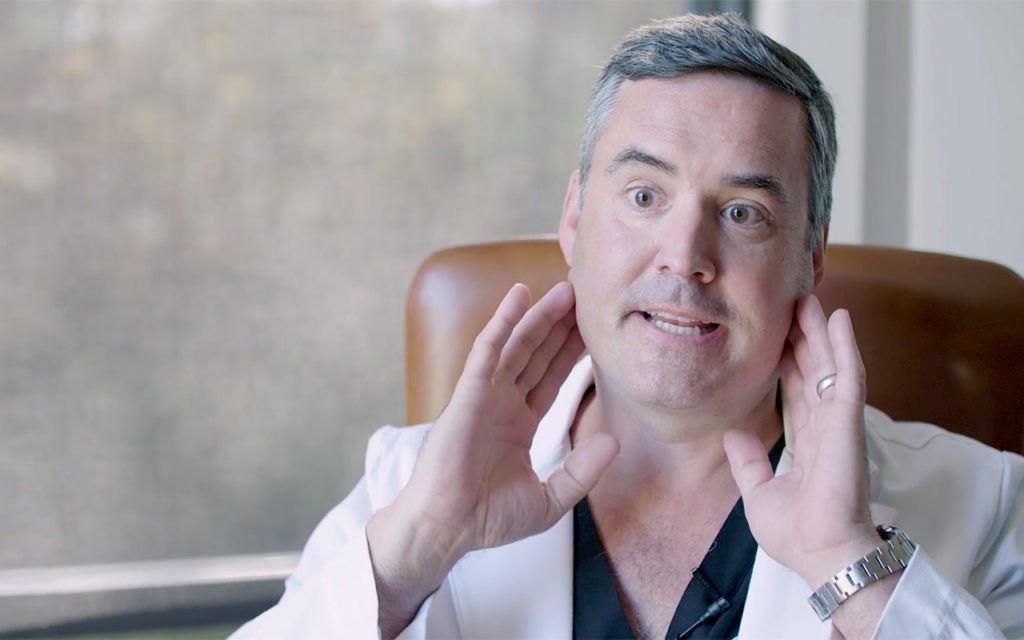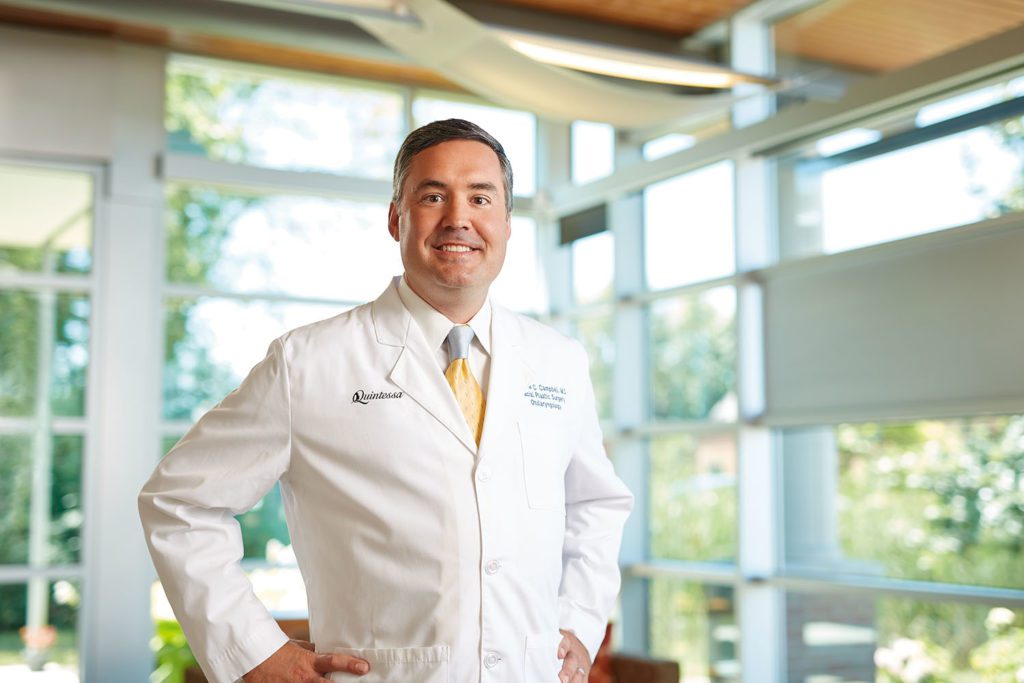Facelifts
Drooping jowls, sagging facial skin, and wrinkles add years to your appearance. Facelift surgery, or rhytidectomy, is commonly performed at Quintessa to help reverse the signs of aging and drastically improve the appearance of the face and jaw.
During facelift surgery, Dr. Andrew Campbell uses advanced techniques to restore a more youthful appearance to the face without creating the traditional telltale signs of surgery.

Frequently Asked Questions
Dr. Campbell does not perform the traditional facelift procedure. He feels that the direction of the lift is not natural, and too much tension is placed on the skin causing widened scars and pulled earlobes. He feels that traditional facelifts often leaves patients with an operated or unnatural appearance, and the longevity is limited.
While most patients are between the ages of 40 and 70, Dr. Campbell suggests that patients have a facelift at the first signs of aging while the facial tissue still has significant elasticity. This allows the results of a facelift to last longer.
Patients frequently go home the same day after facelift surgery. However, some facelift patients may spend the night of their surgery at the outpatient surgical center where they receive individualized, one-on-one care from a private registered nurse. A spouse or significant other can even stay the night with the patient, sleeping in a custom, pull-out single bed. Overnight stays are most often needed when the facelift is combined with other procedures, such as laser resurfacing. Most patients will have a small drain behind the ear to remove excess fluid from under the skin. This drain is removed the following day. Pain medication and sleeping aids are provided to assure comfort during recovery. Any discomfort is typically minimal.
The majority of our facelift patients are up and about the day after surgery. Sutures are able to be removed six days after surgery. However, bruising and swelling may take up to two weeks to resolve. Makeup is commonly worn to hide bruising that may occur. Quintessa carries specialized make-up specifically designed to cover bruising, and our trained experts can advise you on the best camouflage techniques and which products to use.
Facelift results last a lifetime, but the face will continue to age. After 10 to 20 years, you may develop excess skin and facial laxity again. Also, a facelift only affects the lower portion of the face and does not address the eye, brow or forehead areas. Furthermore, it does not change the texture of the skin. However, other procedures may be combined with a facelift to accommodate these areas that have not yet been treated.
To improve skin texture, a laser resurfacing procedure is frequently performed at the same setting. Other procedures, such as a browlift and eyelift, may be combined with a facelift for a more complete treatment and overall improvement. This comprehensive approach to facial rejuvenation provides for a more harmonious effect, and prevents the facial disharmony some individual treatments can cause. Due to the harmonious effect comprehensive rejuvenation provides, Dr. Campbell prefers and most commonly performs this technique on his patients requesting facial rejuvenation.
We would love to meet you! Get a complimentary consult today.
About the Doctor
Rated among the Top 10 Aesthetic Plastic Surgeons in the United States by Aesthetic Everything, Dr. Andrew Campbell and his team of licensed expert medical providers give you the attention you need and the confidence you deserve through customized state-of-the-art surgical and non-surgical specialty treatments including non-invasive skin tightening, laser skin resurfacing, injectables, as well as full body surgical options.
An internationally renowned, double board-certified facial plastic and reconstructive surgeon specializing in facial rejuvenation, Dr. Campbell “combines science and artistry for beautiful results.”




